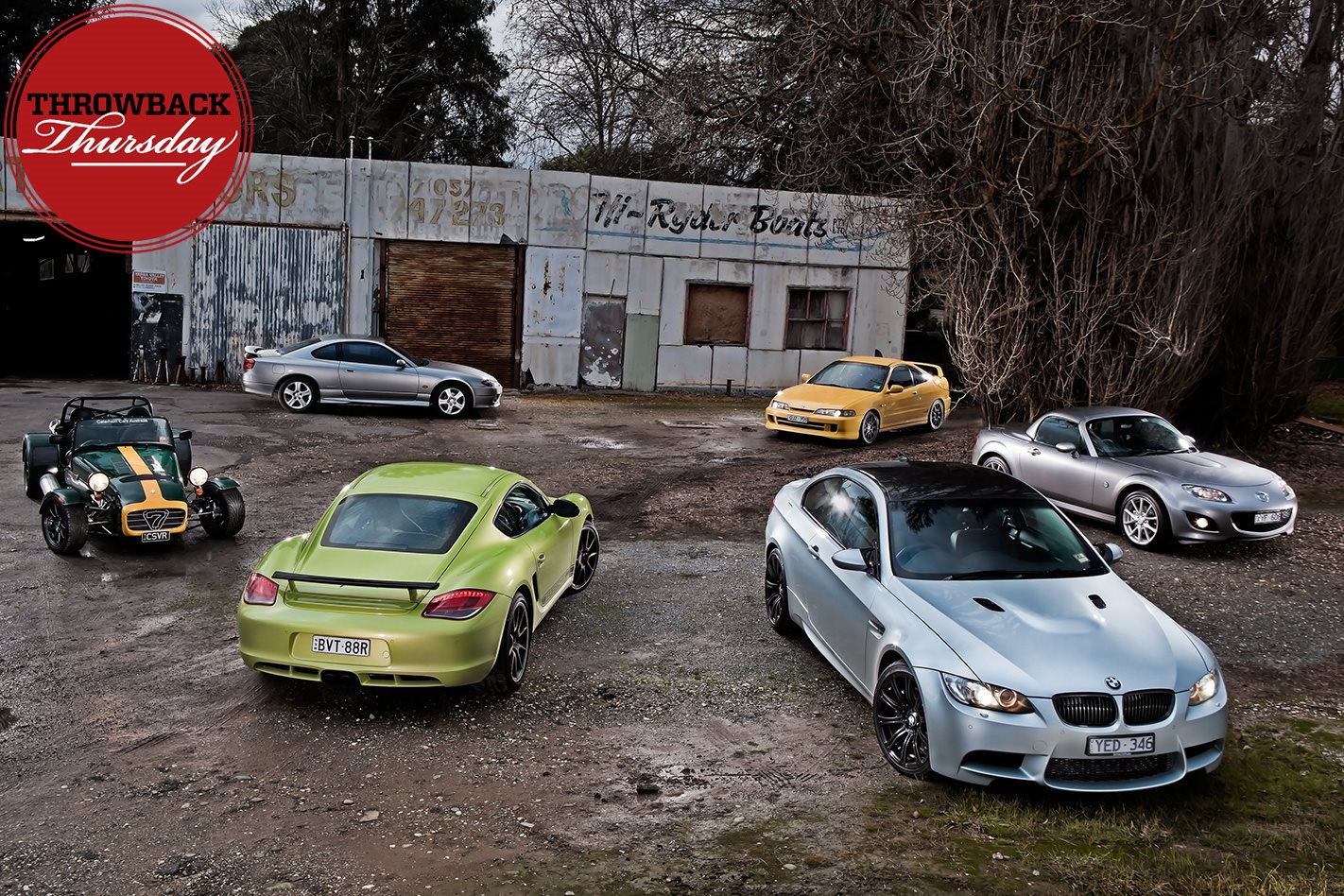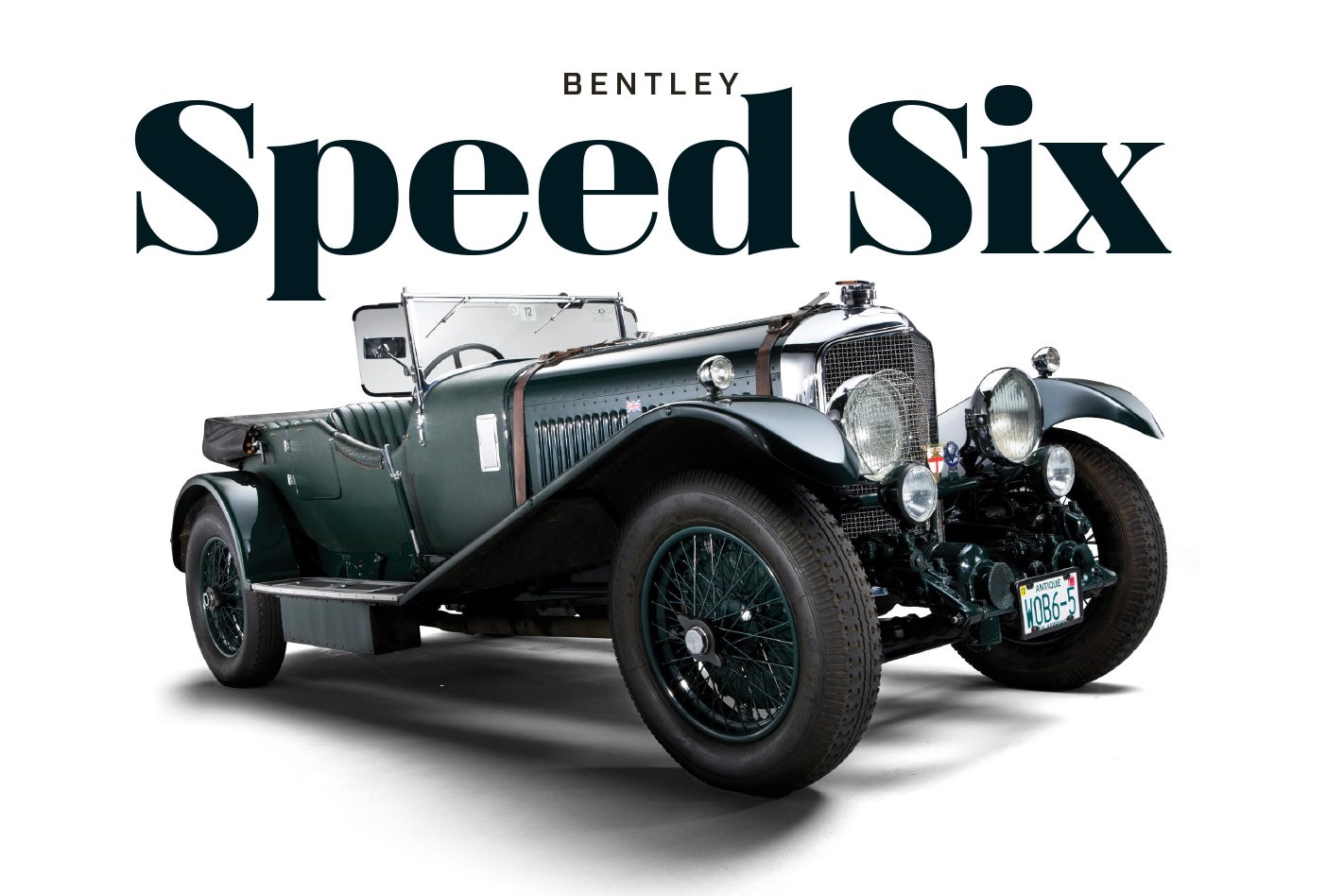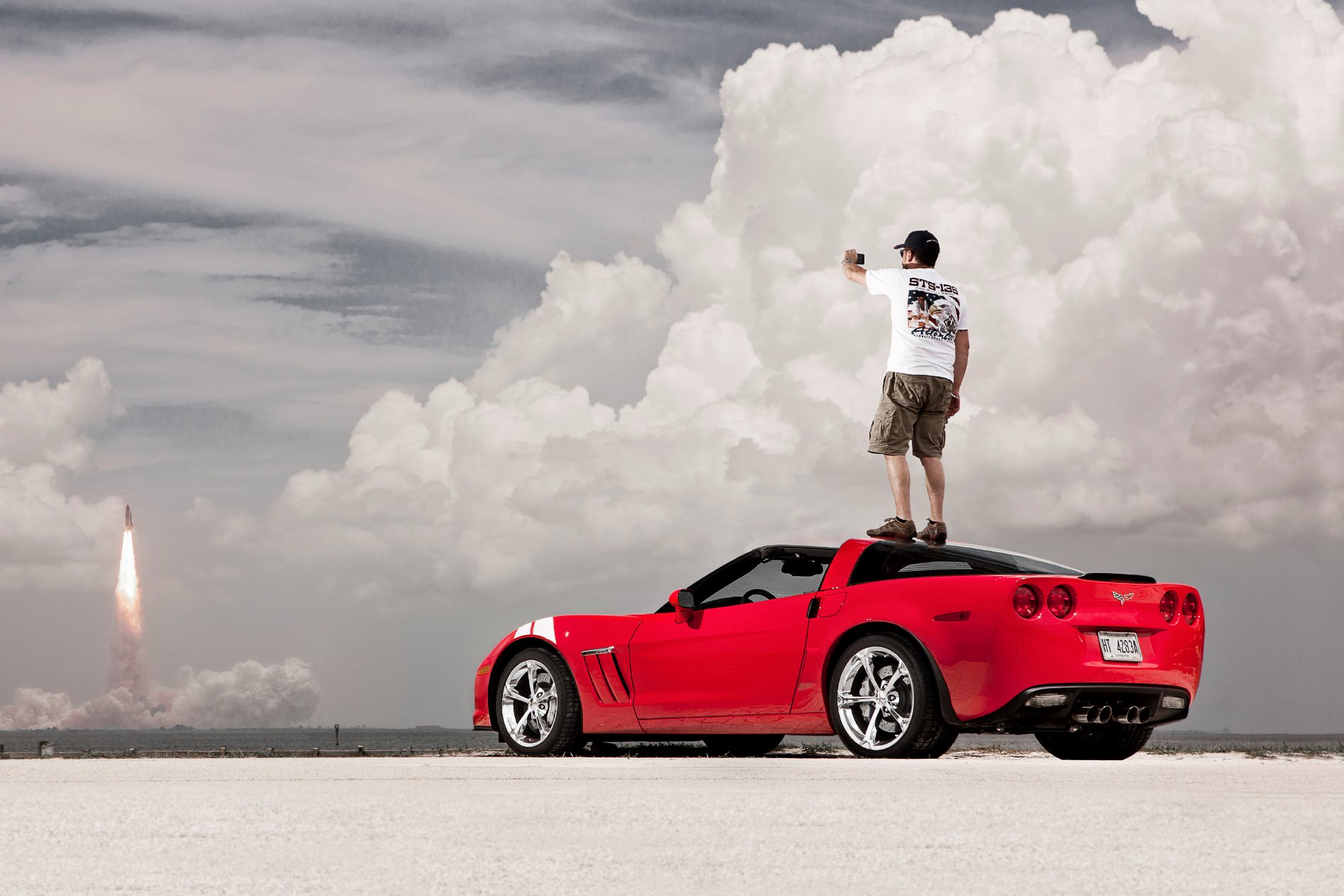First published in the September 2011 issue of Wheels magazine, Australia’s best car mag since 1953.
Six of the best new and classic stripped-back driver’s cars cop a thrashing the old-fashioned way, without the help of a self-shifting tranny, torque-shuffling AWD or adaptive dampers. Less really can be more…
TEN YEARS ago this would have been a normal Wheels sports car comparo. Today, it’s the result of a deliberate effort to ensure our car line-up didn’t include seemingly mandatory inclusions like a dual-clutch gearbox, adaptive dampers, or a torque-vectoring all-wheel-drive system.
 Raw Deals – September 2011
Raw Deals – September 2011
View this article in its original format in the archive.
Don’t get us wrong; those technological advancements can be for the better. We’ve enjoyed the efficient, rapid-fire-shifting benefits of the dual-clutch transmission since the MkIV Volkswagen Golf R32 and first-generation Audi TT. Adaptive dampers, adopted by many makers in crude form in the ’80s, made their debut in more advanced magneto rheological form to blend ride with roadholding in the 2003 Cadillac Seville and, later, Corvette C6, Ferrari 599 GTB, Audi TT and HSV GTS. The advent of computer-controlled diffs brought the catchcries ‘active yaw control’ and ‘torque vectoring’ and made slingshot AWD Japanese turbos fire from corners harder-still.
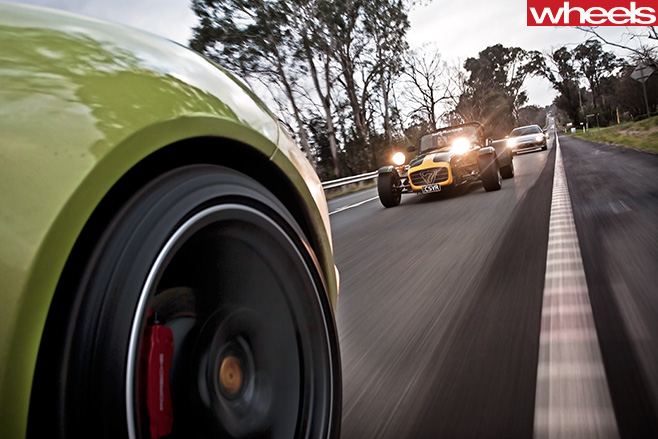
It’d be refreshing, we mused, not to have to dial up ‘sports’ or ‘dynamic’ before the car could deliver its best. Or have to put up with jerky low-speed dual-clutch tranny behaviour on our way out of town in search of ripper roads. Car makers, you can keep all of that stuff. We’ll take a deep, bolstered driver’s seat, thick-rimmed steering wheel, three pedals and a well-oiled gearlever, underpinned by a well-sorted chassis and lusty engine any day, thanks.
The question was, where would we find cars free of such technological affectation? We could start by going back 10 years or more, obviously.
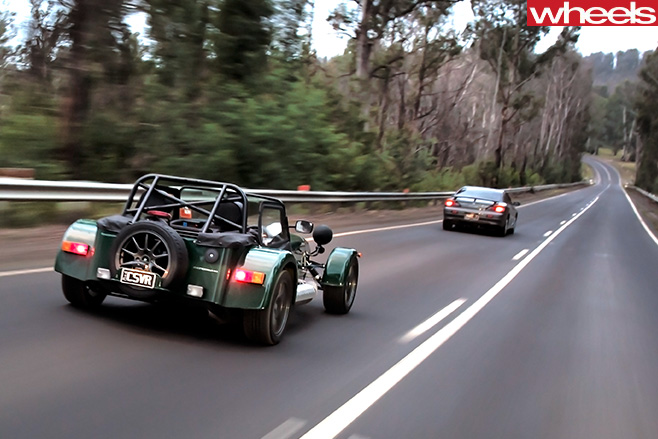
We’re on a winter mission from Victoria’s Yarra Ranges to Sydney, so potentially icy Alpine roads are off limits. We’ll instead trace a path east through the Latrobe Valley and Gippsland regions before pointing north just shy of the east coast, aiming for home via Cooma and Canberra.
After climbing into the Caterham’s cockpit, I’m surprised that the compact Brit roadster is less than form-fitting for this compact Aussie. The driver’s seat won’t slide forward far enough, leaving my feet barely touching the pedals, backrest seemingly too laid back. Chris tells me that the positioning of the seat – designed, oddly, to accommodate a 97th percentile American male – is easily adjusted to suit individual owners.
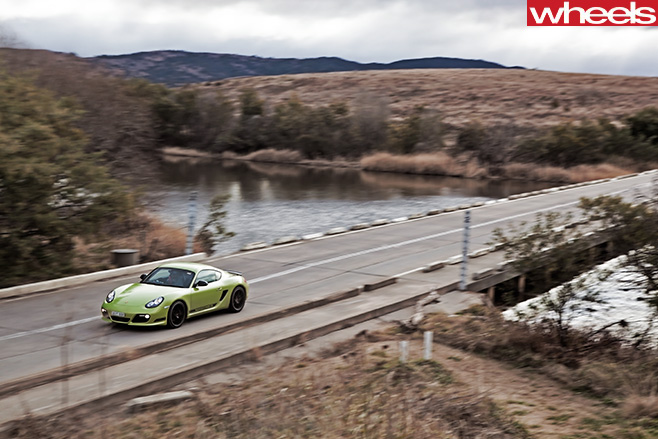
The densely forested Maroondah Highway east of Healesville provides the first taste of driver’s roads. It’s tight and damp and a light fog hangs in the air. Baaap, baaap, baaap; the Caterham revs through the closely-stacked first, second, third and beyond. There’s the effortless, enthusiastic low-rev shove in the back only featherweight atmo cars can produce. The Cosworth donk revs quickly with a crisp, deep and raspy note that spells ‘well-tuned’. The acceleration is manic, the sensation of speed multiplied by the wind whipping and buffeting my face. A hundred kays an hour feels like much more. Much more brings tears to the eyes. Only later does Chris tell me that the cabin is far more ‘snug’ with the side screens installed…
The quick, unassisted steering is a surprise; neither heavy at low speeds nor excessively darty at high speeds. It soon becomes instinctive, and requires so little lock that I almost think the Caterham around bends. The view through the screen, down the long bonnet at the faired front wheels, the sensation of sitting over the rear axle and the mere degrees of steering required seal this as a truly unique driving experience, and the daddy of raw driver’s cars.
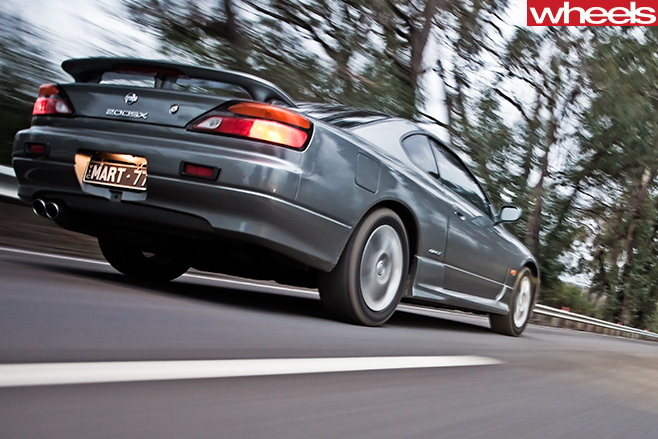
The Honda Integra Type R, perhaps the next most raw, sat idling by the roadside with an irregular lumpiness that told of its aftermarket ‘stage two’ camshafts, colder thermostat and tweaked ECU. The revered original ‘DC2R’, sadly, fails to live on in spirit in today’s Civic Type R. The newer car is 250kg heavier and its torsion-beam rear suspension in place of double A-arms is a backwards step. Purists like owner Daniel Chan know the original is the best, so that’s what we had to have in the form of his tastefully modified, Australian-delivered 1999 model, recently treated to a JDM nose job.
Known for its minimal sound deadening and race-car-like hard ride, the first Type R is often cited as one of the best-handling front-drivers ever. The engine ain’t bad either; a Honda-trademark VTEC 1.8-litre four-pot screamer that produces 141kW at a heady 7900rpm before hitting an 8800rpm cut-out. Peaky, with 176Nm at 6300rpm, but the close-ratio five-speed and 1087kg go some way to compensating.

The suspension upgrades responsible for extra NVH see the coupe corner hard and flat, guided by slick, light steering. The Type R darts into corners and finds balance some rear-drivers would envy. There’s no squirm, no waiting while the body settles on the springs. Mid-corner (and -straight) bumps upset the chassis, but the power and progression of the upgraded brakes restore confidence. Having never driven a Type R before, now I can see why journos and owners love them. Provided you’re prepared to work for the speed, the Integra rewards.
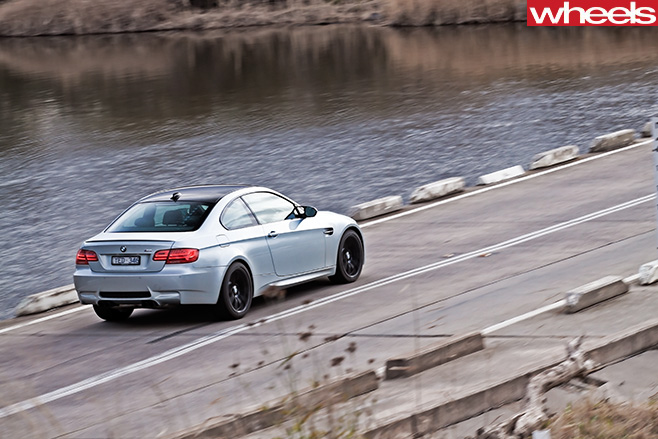
It’s even worse for fans of the 200SX than those of the Type R. Since 2002 there hasn’t been one at all, or a suitable replacement from another Japanese maker. The SR20 turbo engine – well-loved by aftermarket tuners – no longer met emissions standards, so was killed off along with the sports car it powered. A senior Nissan engineer explained the lack of a replacement a couple of years ago, telling me there’s no market for this kind of car anymore. Given that the core market for affordable sports coupes is young people, I’m blaming gen-Y.
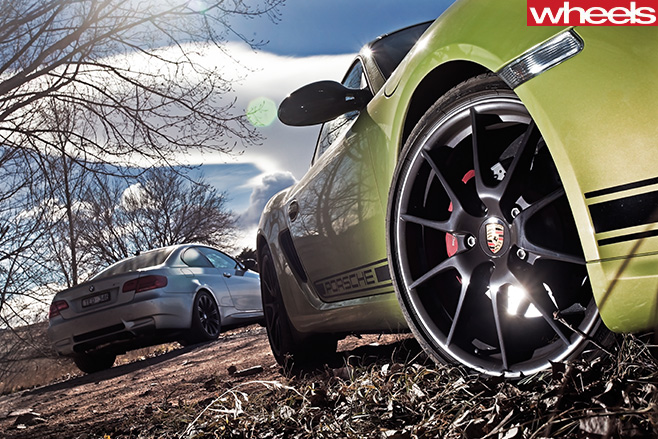
The steering is well-weighted, heavier than the average Japanese system, smooth and feel-rich. But it’s the cut-price-M3 balance and composure that impresses most. Turn-in is crisp, with little initial understeer, quickly moving to mid-corner neutrality, with rear-end adjustability via throttle and Torsen LSD, especially on these damp roads.
The other impressive aspect of driving the 200SX is that it manages to be comfortable, quiet and good-riding, offering plenty of entertainment without being edgy or difficult to drive fast.
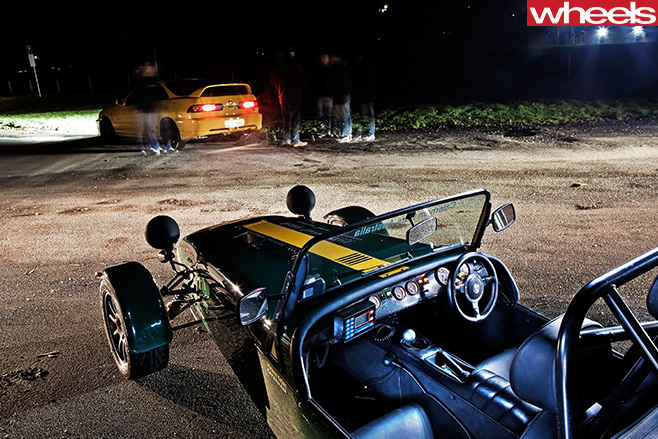
Our first modern contender, like the Caterham, was fashioned after a Lotus, but it was more of a spiritual thing that didn’t include the Elan’s leaks (oil onto the floor, water onto the head…). That’s no doubt part of the reason Mazda’s MX-5 went on to become the affordable roadster of the past 20 years. It’s also become the de facto lightweight, Japanese sports coupe in folding-hardtop form. The front-engined rear-driver does a lot with what it’s got – a humble 118kW Mazda 3-derived 2.0-litre twin-cam four, powering through a six-speed manual – courtesy of a commendably light 1167kg kerb weight. They don’t handle better this side of $100K thanks to the Mazda’s finely-honed strut front, multi-link rear suspension. And not paying for impressive-sounding driver aids you don’t need means an attractive $47K pricetag (or $42K for the ragtop).

The MX-5 proves popular, as ever. James Cleary reckons that the Mazda two-seater, now in its third generation “is redolent of the original in the way it feels; even the way it sounds”. McKay reckons “they’ve made a few things better [such as] cockpit space”.
The MX-5 does a great job of being the affordable Japanese sports coupe, giving little away to the thrice-the-price Germans in terms of involvement and fun, if understandably lacking a fair bit in the grunt department.
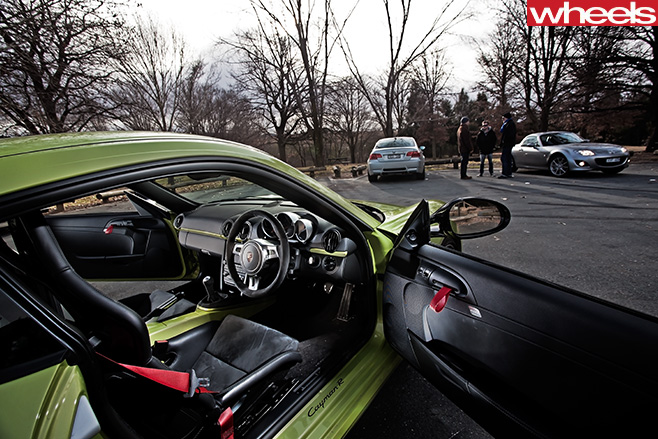
An M3 Pure Edition would have been tautological when the road-car-for-(Group A)-racing E30 original emerged from Munich 25 years ago. Three generations later, the E92 M3, despite sticking to the original formula – front engine, rear drive, lots of atmo revs and dynamic ability – is no longer entirely free of marketing affectation. Enter the Pure Edition. Okay, so the gloss black 19s and other bits (we’ll let you look at the pictures) are evidence styling/marketing still had their input. But the lack of M Drive and its multitude of driver-adjustable steering, adaptive damping, throttle and ESC settings surely results in an M3 the way those talented M engineers would have liked it in the first place. It gets better. A cloth/leather trim combo replaces full leather, and the front seat heaters are binned, along with the adaptive headlights, keyless start, CD changer and alarm. Ours, of course, is a six-speed manual. However, few things are completely pure in the world of BMW, so we’ll try to ignore the stop-start, brake energy regeneration and power button that sharpens throttle response. The variable M differential lock should actually be quite handy, but don’t tell anyone I said so.
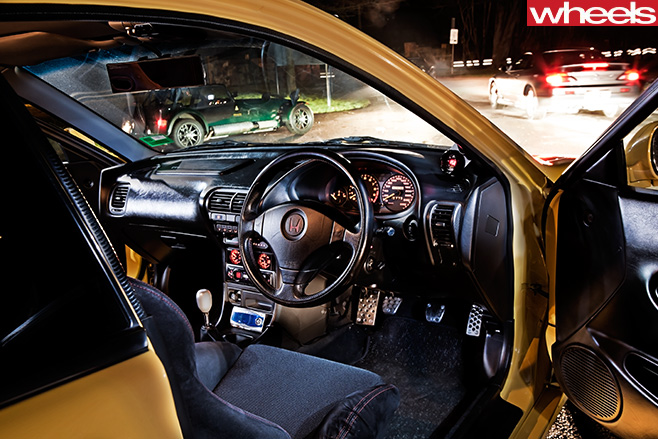
Tossing out the M Drive system means you drive with a clear head, no longer wondering whether you’ve nailed the right setting. M division’s engineers designed the car, so we’re pretty comfortable with them deciding on the best all-round weighting for the steering and bump/rebound calibration of the dampers.
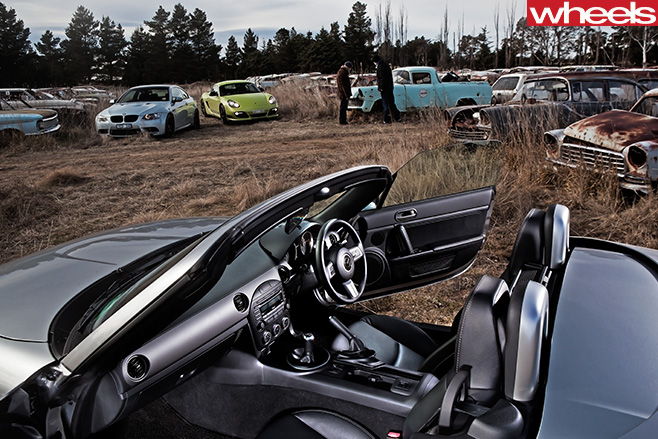
In the Porsche showroom, on the other hand, it seems you pay extra for Stuttgart to take things out. You spend $17,500 more for Cayman R than S to lose 55kg, though you do gain 200rpm and 8kW at the top-end. You also get carbon-shell fixed-back seats and a tied-down suspension tune (no buttons) among performance upgrades that transform the mid-engined coupe into a proper weapon. The $165K Cayman R offered in Oz also includes standard equipment that’s optional in Europe; cruise, climate control and sat-nav are features we’re not prepared to do without to trim a few more kilos. Porsche claims it’s two-tenths quicker to 100km/h than the S, at 5.0sec neat (manual, naturally). And to prove stripped-back lightweights are the way to a planet-friendly future, ADR combined-cycle consumption drops from 9.8 to 9.7L/100km.
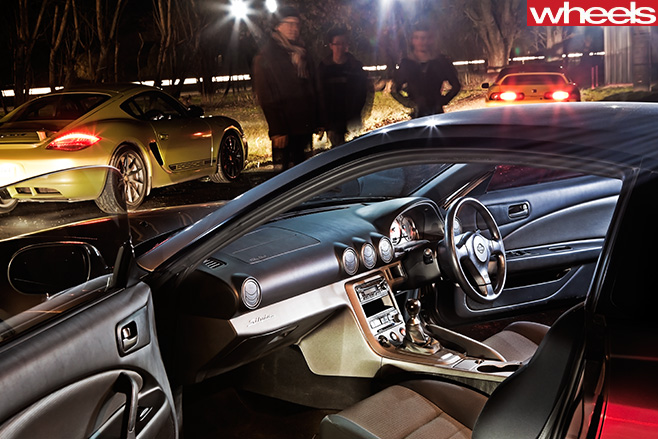
A deep, guttural note pours from the tailpipes under load in sixth as the torquey 3436cc six flattens hills with ease. No need for third, or even fourth or fifth on these flowing bends, except to hear the crisp intake note and howling exhaust tune again and again, and delight in slotting the gearlever up and down the ratios. Having the engine behind you lets these noises flood the senses in hi-def, as well as contributing to an unflappable, but also infinitely adjustable chassis that makes you crave kay after kay of bendy roads. Sadly, all too soon the lights of Cooma in the distance signpost that this leg of the journey is over.

It proves a fine place to reflect over steak ’n’ veg and local tap beer. No bull, y’see. However, the general sentiment is a surprise. Pete and James reckon the MX-5’s better than ever because it’s got more comfort and cabin space than in earlier generations, without losing its innate appeal. We all agree that the invigoratingly raw Caterham has its place as a weekender. For summer. And we liked the 200SX as much for its liveability as its well-balanced handling. The Nissan or the Type R will certainly suit if your bank balance (like ours) is as minimalist as your taste in performance cars. Okay, so maybe we’re not as hardcore as we thought we were. But, then, that wasn’t the point. The point was to enjoy an honest, hard drive. Not surprisingly, the best way to do that is in a Cayman R with a manual ’box and a button-free suspension. Or an M3, if there are three of you. The best news, though, is that there’s a raw deal for every budget.

